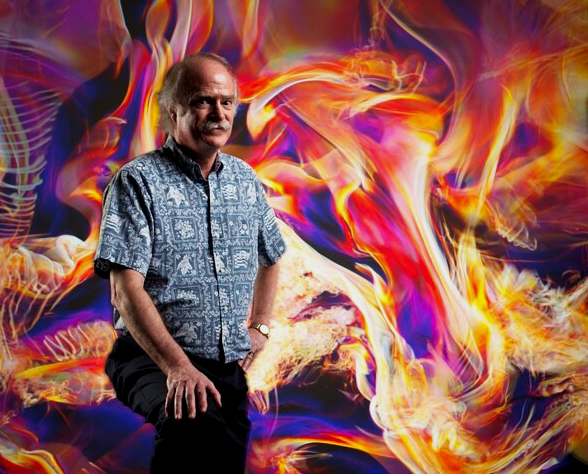Events on October 20, 2017

Paul Woodward, Professor, University of Minnesota Presents:
Integrating Simulation and Visualization in Stellar Hydrodynamics
October 20, 2017 at 2:00pm for 1hr
Evans Conference Room, WEB 3780
Warnock Engineering Building, 3rd floor.
Paul Woodward received a B.A. in Mathematics and Physics from Cornell University in 1967 and a Ph.D. in Physics from the University of California, Berkeley, in 1973. He worked for many years at the Lawrence Livermore National Laboratory before taking, in 1985, his present position as Professor of Astronomy at the University of Minnesota. Woodward is a Fellow of the Minnesota Supercomputing Institute and is Director of the University of Minnesota's Laboratory for Computational Science and Engineering (LCSE). Woodward's research has focused on the exploration of nonlinear phenomena in fluid dynamics through large-scale computer simulations. He has worked principally on turbulent flows, and especially in astrophysical contexts where the effects of compressibility are important. His most recent numerical simulations, with colleagues at the LCSE, at the University of Victoria in Canada, and at national labs, deal with the interaction of compressible convection with turbulent mixing at unstable fluid interfaces in the deep interiors of stars. Such mixing at convection zone boundaries can lead to flash events with a dramatic impact on the production of heavy elements as well as the further evolution of the star. To make these simulations possible, Woodward has developed accurate numerical methods, the best known of which is the Piecewise-Parabolic Method (PPM). His team at the LCSE has also developed specialized systems and software to visualize the multi-terabyte data sets these simulations produce. He has also worked on techniques for the efficient parallel implementation of his codes on the most powerful computers available. In 1995, Woodward received the IEEE's Sidney Fernbach Award in large-scale computation. In 1999, along with 12 collaborators at Livermore, IBM, and Minnesota, he shared in the IEEE's Gordon Bell Award in the performance category.Abstract:
I am studying brief events in stars that can profoundly affect their evolution, although they do not result in explosions, and they do not last more than a few days. These events occur deep in the stellar interior, so that they are observed mainly by the side effects of their nucleosynthesis. They depend upon an interplay of fluid instabilities, turbulence, and combustion of new nuclear fuel that is drawn into hot, burning regions from stably stratified layers of the star. I will describe the challenges to computation that these simulations involve. The fluid flow regime is similar to that of weather on the earth, with flow Mach numbers in a regime where explicit methods must work hard, but are still efficient. As with global climate studies, the need to carry the simulation forward for many dynamical times – literally millions of time steps – produces a special challenge in scaling the computation to large machines. Success in this effort means that we must monitor the calculation closely as it proceeds, since computer time is consumed very rapidly during a run. We are integrating the visualization of the flow into the running application, so that we can see what is happening fast enough and accurately enough to know when the simulation should go forward and when it should be stopped. We are also always seeking ways in which to make the simulation run faster, and one potential way is to move the entire calculation to GPUs and 32-bit precision. In this talk I will outline the goals of the science, lay out the computational challenges, and describe ways in which we are trying to meet these challenges with an integrated approach to simulation and visualization.
Posted by: Nathan Galli
N. Benjamin Murphy, PhD, Postdoctoral Candidate, Tasdizen Lab Presents:
Data Analysis for Composite Materials
October 20, 2017 at 3:45pm for 1hr
Evans Conference Room, WEB 3780
Warnock Engineering Building, 3rd floor.
Posted by: Nathan Galli




